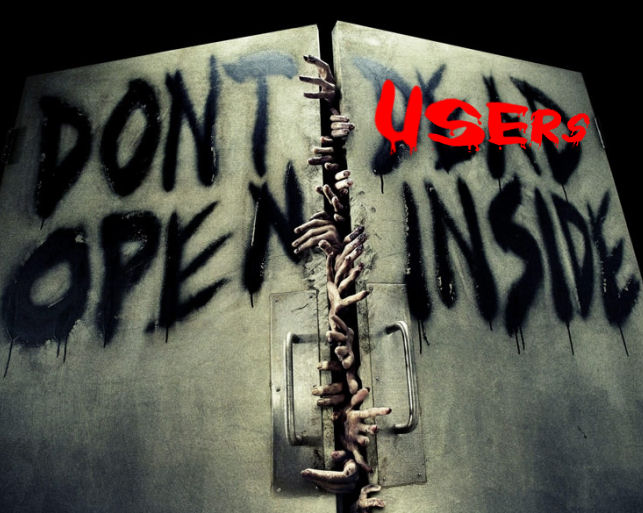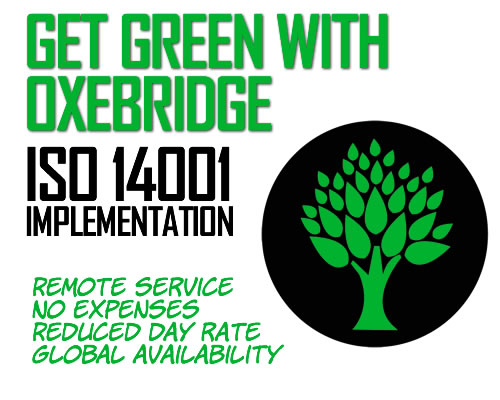 For over a decade Oxebridge has struggled to drive improvements in the ISO 9001 scheme on two major fronts: in the content of the standard itself, by pushing for greater end user participation in the development process, and in the accreditation scheme, by trying to reduce conflicts of interest and improve trust in certification. Neither of those sounds particularly nefarious, but you’d never know it listening to the standards development committees and certification bodies speak. I call these groups the “incumbents” because they currently hold power over the entire ISO certification world, but probably not for long.
For over a decade Oxebridge has struggled to drive improvements in the ISO 9001 scheme on two major fronts: in the content of the standard itself, by pushing for greater end user participation in the development process, and in the accreditation scheme, by trying to reduce conflicts of interest and improve trust in certification. Neither of those sounds particularly nefarious, but you’d never know it listening to the standards development committees and certification bodies speak. I call these groups the “incumbents” because they currently hold power over the entire ISO certification world, but probably not for long.
You would think the incumbents would embrace an ally willing to go to the mat for them, ready to ensure they make tons of money by expanding their reach to industries and companies that haven’t ever considered their services. You’d be wrong. The incumbents are textbook reactionaries, opposing any change in the status quo, lacking any vision to see how that change might provide them benefits the likes of which they never imagined. They are risk-averse, terrified, and utterly paranoid.
To the standards development bodies, including ISO’s Technical Committees, automotive’s IATF and aerospace’s IAQG, the notion of allowing greater participation by standards end users is akin to opening the doors to a horde of sweetbread-hankering zombies. It’s chaos, and keeping that door closed is the best option.
To the certification and accreditation bodies, improved trust means a direct hit on their bottom line, since it means applying limitations. In a truly trustworthy scheme, CBs can’t provide any consulting at all, and can’t collude with consultants in order to get leads. ABs cant accept money from their CBs, because they may some day have to de-accredit a customer when a CB disregards the rules. Right now doing so is impossible, because it would reduce an AB’s revenue so dramatically, doing so could put the AB out of business overnight.
So we’re left with a scheme where the CBs and ABs dominate the entire thing, by stacking the deck against end users through relaxed rules on CB performance, increased opacity into their operations, ever-expanding barriers to user participation in standards development, and decreased oversight on conflicts of interest. The result is a certificate that is more and more worthless, growing closer and closer each day to the same junk certificates issued by the unaccredited certificate mills.
The thing they share is a gross lack of vision, unable to see past the next client contract, with no long view whatsoever.
Projectionists Union
What’s more disappointing, though, is how quickly the players themselves imprint their cynical, short-term vision on everyone else. When confronted with a plan to help them make more money, but which might require them to think a little out of the box, they not only reject the idea, they do so with a hostile cynicism that poisons the environment even more. I’m talking about the “projection defense,” which refers to the psychological trait by which “humans defend themselves against unpleasant impulses by denying their existence in themselves, while attributing them to others.” Because these incumbents only operate in mode driven by short-term, cheap profits, they can’t imagine any other rationale for any action they don’t recognize.
In response to my story last week about EAGLE Certification Group’s increasingly dubious sales tactics, Director of Business Development Ben Marchant wrote to clarify a few points (which was helpful) but ended with a denunciation (which wasn’t so helpful):
It is not clear to me whether your actions are the result of someone trying to drive traffic to their website by creating controversy or as someone who is concerned about the industry at large. I suspect the former, and if you ever wish to re-engage with the industry in a proactive and positive way please contact us then.
If we overlook the staggering arrogance of the accusation — that I need the permission of some random sales guy to “engage with the industry” — we get to the core of it: he can’t imagine someone exerting effort unless there is a short-term profit in it, such as “to drive traffic to their website.”
This false claim is made by nearly every grumpy curmudgeon incumbent with an allergy to change. Recently former Lockheed Martin and AAQG rep Jack Fletcher made the exact same accusation:
I realize that you seek out adversaries as a part of your advertising strategy.
Showing even more disgusting levels of bottom-feeding, Fletcher claims to have a private message from me admitting the same, but when asked to produce it, couldn’t, saying he was instead holding onto it to “share” if need be — presumably a threat of some kind, but who the hell knows since his next comment was “Well, I have wine to drink.” I bet.
This is not new, even though I’m sure each of these guys think they are somehow original. As far back as 2003 former RAB (now ANAB) head Bob King said the same thing in response to my reporting on “negative growth” of ISO 9001 certificates in the US. (That was my prediction that the US would, for the first time, begin to lose more certificates than it gained.)
Contrary to what alarmists with an interest in fueling controversy might say, ISO 9001 is still on the rise–and with good reason. Predictions of negative growth in ISO 9001 registrations seem misplaced.

“Hey. don’t bring me into this!”
Hard data soon proved King utterly wrong, and the US dropped into “negative growth” that very year, losing more than 8,000 certificates. That led to a spiraling supersuck that saw the US lose a total of 28,400 certificates over the next seven years. Had King and his cronies listened, maybe we could have had a plan in place to at least address the losses, if not reverse them. Instead, we saw — and by most accounts continue to see — the US fleeing from ISO like rats on Nosferatu’s death ship.
I Know You Are, But What Am I?
So we see two interesting psychological defects in play: first, the projection defense. Second is egocentrism, and specifically the “assumed similarity bias.” Following this, the incumbents can’t actually imagine someone disagreeing with their point of view, so they have to ignore all incoming evidence and jump to the only conclusion they can: the one that represents what they would do. And you’re back to the projection defense, and so turns the circle.
Worse still, each of the individuals makes the egocentric assumption that they are the center of focus. They only read the articles with their names in them, and they only analyze everything from their selfish point of view. This restricts them from seeing the bigger picture, and knowing that they are just tiny little pieces in a far bigger challenge. This explains their complete bafflement when we do things that help their industry, like argue for putting the ISO 9001 mark on product, or take on the certificate mill operations.
To break that cycle, the incumbents need to take a pause, and ask themselves “is this guy actually working towards our best interests, even if we don’t recognize it?” That would be an important first step in not only understanding what’s happening, and also explain the majority of their questions. And once that happens, they can relax, and realize the entire Oxebridge maneuver is a giant Chinese finger trap. The more they resist, the more they tighten the noose. Once they yield to it, they achieve nothing but benefit.
We will restore trust to the ISO 9001 certification scheme. We will improve the content of the standards for the benefit of users. It will be an amazing thing, too, when ISO 9001 once again means less customer oversight audits, improved customer satisfaction, and tangible improvements to products and services. But the cynics are going to have to step aside and let the grownups drive now.
Christopher Paris is the founder and VP Operations of Oxebridge. He has over 35 years’ experience implementing ISO 9001 and AS9100 systems, and helps establish certification and accreditation bodies with the ISO 17000 series. He is a vocal advocate for the development and use of standards from the point of view of actual users. He is the writer and artist of THE AUDITOR comic strip, and is currently writing the DR. CUBA pulp novel series. Visit www.drcuba.world








